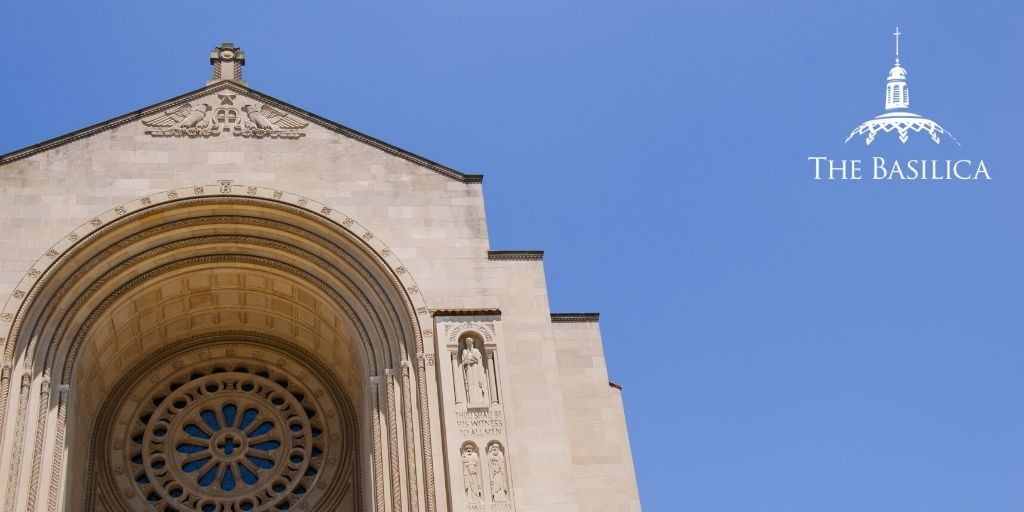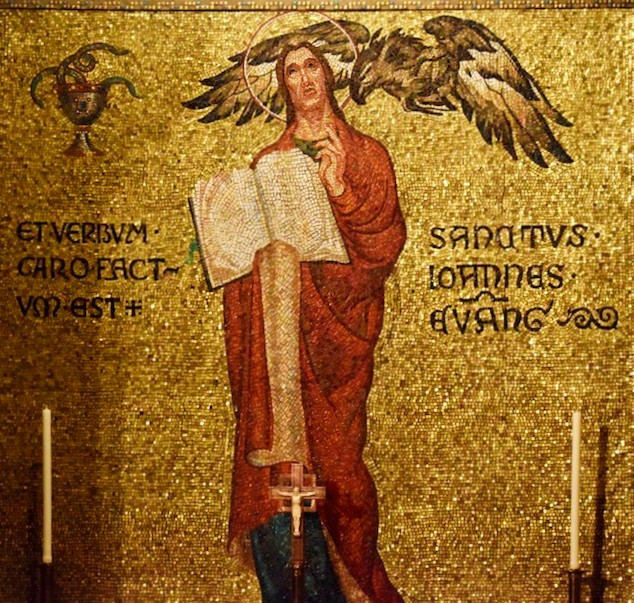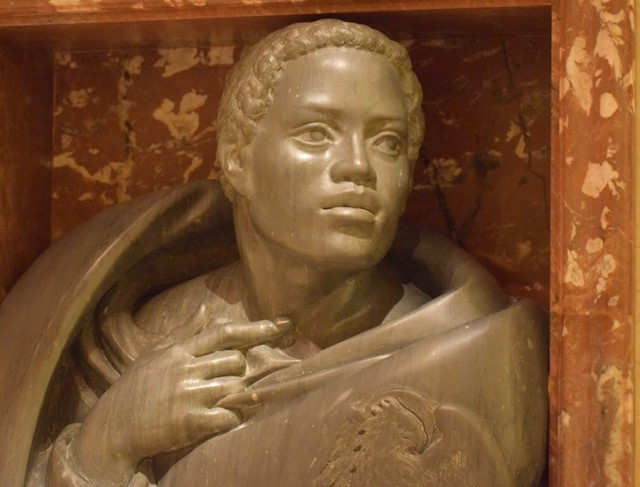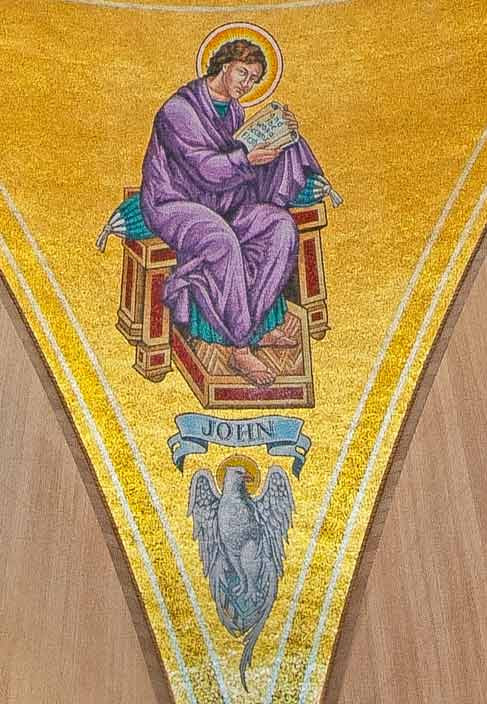For this is the message you have heard from the beginning: we should love one another.
– 1 John 3:11

A panoramic view of the Basilica, highlighting its spiritual significance as a place of love and reflection, relevant to the teachings of St. John.
In the rich tapestry of Jesus Christ’s ministry, twelve disciples played pivotal roles, each contributing uniquely to the foundation of Christianity. Among these chosen men, one is often referred to with a tender phrase: “the disciple whom Jesus loved.” This beloved disciple, identified as Saint John the Apostle and Evangelist, held a special place in Jesus’ heart, a closeness acknowledged throughout the Gospels, particularly in John’s own account. Celebrated annually on December 27th, the Feast of Saint John invites reflection on his profound relationship with Jesus and his enduring message of love, a cornerstone of Christian teaching. John’s writings, encompassing a Gospel, three epistles, and the Book of Revelation, resonate across centuries, emphasizing the paramount importance of love in the life of a believer. But which disciple did Jesus love and what made their bond so unique?
John: From Fisherman to Follower of Jesus
John’s journey with Jesus began humbly by the Sea of Galilee. Fishing alongside his brother James, John’s life took a dramatic turn when he encountered Jesus. After a night of unsuccessful fishing, Jesus instructed them to cast their nets once more. The miraculous catch that followed, overflowing their boats, was a pivotal moment (Luke 5:1-11). This extraordinary event preceded Jesus’ simple yet life-altering invitation: “Follow me, and I will make you fishers of men” (Matthew 4:18-22). Remarkably, John and James responded with immediate and unwavering commitment, leaving behind their nets and their former lives without hesitation. This instant and complete dedication underscores the powerful impact of Jesus’ call and the nascent faith stirring within John.

The Saint John Chapel within the Basilica, a dedicated space for veneration, illustrating the honor bestowed upon the ‘disciple Jesus loved’.
John quickly ascended to become one of Jesus’ inner circle, a select group that witnessed some of the most transformative events in Jesus’ ministry. He was present at the Transfiguration, where Jesus revealed his divine glory, and at the raising of Jairus’ daughter, a powerful display of Jesus’ power over death. Furthermore, John accompanied Jesus to the Garden of Gethsemane on the eve of his crucifixion, sharing in Jesus’ anguish and prayer. Crucially, among all the disciples, John stood steadfast at the foot of the cross during Jesus’ crucifixion, a testament to his unwavering loyalty and love. The Gospel of John also poignantly describes John reclining next to Jesus at the Last Supper, a gesture symbolizing deep intimacy and friendship in Eastern dining customs. This intimate posture further reinforces the special connection between Jesus and John, the disciple whom he loved.
The “Son of Thunder” and Spiritual Growth
Despite his close relationship with Jesus, John was not without flaws and moments of impetuosity. Jesus, in a somewhat humorous yet insightful manner, nicknamed John and his brother James “the Sons of Thunder” (Mark 3:17). This moniker reflected their fiery zeal and sometimes volatile reactions. An instance of this “thunderous” nature is seen when John and James rebuked a man for casting out demons in Jesus’ name, revealing a possessiveness and lack of understanding of Jesus’ inclusive mission (Luke 9:49). In another episode, when Samaritans refused to welcome Jesus, the brothers were indignant and asked Jesus if they should call down fire from heaven to punish them. In both cases, Jesus gently corrected their extreme reactions and intolerance, guiding them towards a more compassionate and understanding approach. Perhaps most tellingly, James and John’s request to be seated at Jesus’ right and left hand in glory demonstrated a lingering ambition and misunderstanding of true discipleship, prompting Jesus to respond, “You do not know what you are asking” (Mark 10:37-38). These episodes highlight John’s journey of spiritual growth, guided by Jesus’ patient teaching and love.

Saint John depicted in the Our Mother of Africa Chapel, showcasing the universality of his message and appeal across diverse cultures.
The Apostle of Love: John’s Enduring Message
John’s unique designation as “the disciple whom Jesus loved” is not merely about personal affection but deeply intertwined with his theological emphasis on love. Throughout his Gospel and epistles, love emerges as the central theme, reflecting the very heart of Jesus’ teachings. In John’s Gospel account of the Last Supper, Jesus’ final and most important commandment is unequivocally centered on love:
“As the Father has loved me, so have I loved you. Now remain in my love. If you keep my commands, you will remain in my love, just as I have kept my Father’s commands and remain in his love. I have told you this so that my joy may be in you and that your joy may be complete. My command is this: Love each other as I have loved you.” – John 15:9-12
This passage encapsulates John’s core message: love is not just an emotion but a commandment, a way of life mirroring the divine love between the Father and the Son. John’s writings consistently emphasize love as the defining characteristic of Christian discipleship, urging believers to love one another as Christ loved them. This focus on love, deeply rooted in his personal experience of Jesus’ love, is a key reason why John is remembered as the “Apostle of Love.”

Saint John as portrayed in the Trinity Dome of the Basilica, symbolizing his elevated status and theological contributions to Christian doctrine.
The Distinctive Gospel of John
John’s Gospel stands apart from the synoptic Gospels (Matthew, Mark, and Luke) in its theological depth and unique perspective on Jesus’ identity. A primary distinction is John’s explicit focus on Jesus’ divinity. The very opening verses of John’s Gospel declare, “In the beginning was the Word, and the Word was with God, and the Word was God,” establishing Jesus’ eternal nature and divine essence from the outset. This emphasis on Jesus as the divine Word of God permeates John’s entire Gospel.
Furthermore, John’s Gospel includes unique details and perspectives not found elsewhere. He mentions minor characters by name, such as Annas, the father-in-law of Caiaphas, and Malchus, the slave whose ear Peter cut off in the Garden of Gethsemane (John 18:13, 18:10). These seemingly minor details add a layer of personal witness and historical specificity to his account. John also uniquely highlights the role of the Holy Spirit, emphasizing Jesus’ promise of the Spirit as the Advocate who will guide believers into truth, empower them to continue Jesus’ work, and dwell within them (John 7:37-39, 14:16-17, 16:13). These distinctive elements contribute to the unique theological richness and spiritual depth of John’s Gospel, solidifying his legacy as a profound theological thinker and writer.
Unlike most of the apostles who faced martyrdom, John is traditionally believed to have died peacefully in Ephesus in old age. His life, characterized by an initial fiery temperament transformed by Jesus’ love, and his writings, centered on the paramount importance of love, continue to inspire and guide Christians today. Saint John’s legacy as the “disciple whom Jesus loved” endures not just because of a special personal bond, but because he so eloquently captured and conveyed the essence of Jesus’ message: a message of divine love that transforms lives and unites believers across generations.
Saint John is venerated in numerous locations within the Basilica, including: South Entrance, E-Buttress; Mary Memorial Altar; St. John Chapel; St. Joseph Chapel lunette window; Our Mother of Africa Chapel ; Byzantine Ruthenian Chapel icon; Our Lady of Czestochowa Chapel; [West Transept mosaic “The Second Coming](https://www.nationalshrine.org/interactive-map/?location=im-53),” ; W-Chancel Clerestory window; Sanctuary dome mosaic, UC; Redemption Dome Mosaic; The Trinity Dome SE Pendentive.
Sources:
Butler’s Lives of the Saints (ed. by Bernard Bangley)
Cowan’s The Way of Saints
Light a Candle at the Basilica
 A lit candle symbolizing prayer and devotion at the Basilica
A lit candle symbolizing prayer and devotion at the Basilica
In honor of St. John, you are invited to light a candle today at the Basilica. Vigil candles burn perpetually in the chapels of the National Shrine, representing the prayers and faith of those seeking intercession.
Honoring the Holy Family at the Basilica
Who was the first martyr for Christ?
